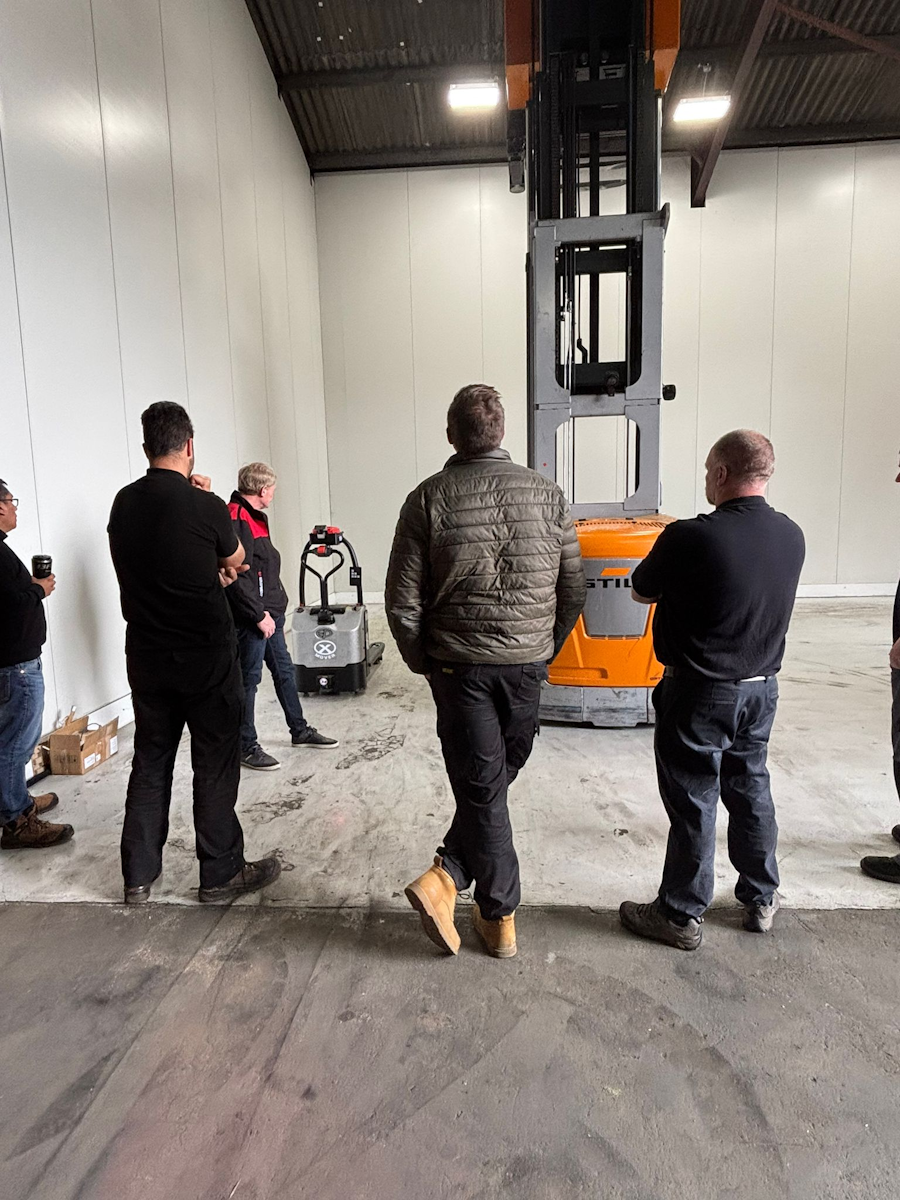Blog
Top 10 Forklift Safety Tips to Prevent Workplace Accidents

Forklifts are essential in many industries, including warehousing, construction, manufacturing, and logistics. But while these machines are powerful tools for productivity, they can also pose significant safety risks if not operated properly. According to OSHA (Occupational Safety and Health Administration), forklift-related accidents cause approximately 85 fatalities and 34,900 serious injuries annually in the U.S. alone.
The good news? Most of these incidents are preventable with proper training, regular maintenance, and a strong safety culture. Whether you're a business owner, warehouse manager, or forklift operator, understanding and implementing forklift safety best practices can save lives, reduce costs, and increase efficiency.
Here are the top 10 forklift safety tips to help prevent workplace accidents.
1. Ensure All Operators Are Properly Trained and Certified
Before anyone gets behind the wheel of a forklift, they must be certified through an OSHA-compliant training program. Certification involves both classroom instruction and hands-on evaluation to ensure that operators understand the machine’s mechanics and how to use it safely.
Why it matters: Untrained or improperly trained drivers are the leading cause of forklift-related accidents. Certification helps prevent dangerous mistakes and keeps your business compliant with safety regulations.
👉 Bonus Tip: Reevaluate operator skills regularly and offer refresher courses every 3 years, or sooner if there’s an accident or near-miss.
2. Conduct Daily Pre-Operation Inspections
Forklift inspections should be done at the beginning of each shift, even if the machine looks fine. This includes checking:
-
Brakes and steering
-
Tires and forks
-
Fluid levels (oil, coolant, hydraulic)
-
Warning lights and horn
-
Seatbelt functionality
-
Any visible leaks or damage
Why it matters: Identifying potential issues early helps prevent equipment failure that could lead to injury or product damage.
👉 Use a checklist to ensure consistency and document inspections for accountability.
3. Always Wear a Seatbelt
It might seem basic, but many forklift-related fatalities occur when operators are thrown from the vehicle during a tip-over. A seatbelt can save a life by keeping the operator securely in the cab.
Why it matters: Tip-overs are one of the most common forklift accidents. Staying inside the protective frame is the safest place during one.
👉 Ensure all forklifts have functioning seatbelts and enforce seatbelt policies strictly.
4. Know Your Forklift’s Load Capacity
Each forklift has a rated load capacity—exceeding it can cause tipping, load drops, and mechanical failures. Operators should know how to read the data plate and understand how load placement affects stability.
Why it matters: Overloading is a common cause of forklift accidents, especially when loads are lifted too high or improperly balanced.
👉 Post load capacity guidelines clearly in the warehouse and train operators to calculate safe lift limits.
5. Operate at Safe Speeds
Forklifts are not built for speed. Maintain a safe and controlled speed, especially when turning corners, traveling through congested areas, or operating near pedestrians.
Why it matters: Speeding reduces reaction time and increases the chance of rollovers or collisions.
👉 Set and enforce site-specific speed limits, and use signage or floor markings to guide behavior.
6. Keep Clear Visibility at All Times
Operators must have a clear line of sight when driving forward or reversing. If a load obstructs the view, drive in reverse (unless going uphill), or ask for a spotter’s help.
Why it matters: Many forklift accidents involve collisions due to obstructed views or blind corners.
👉 Use mirrors, horns, and warning lights in high-traffic zones, and install cameras on forklifts when needed.
7. Use the Horn and Warning Devices
Forklift horns, alarms, and lights aren’t just accessories—they’re critical safety tools. Operators should use the horn when approaching corners, entering/exiting trailers, or near pedestrians.
Why it matters: Forklifts can be surprisingly quiet, making it easy for others not to notice them until it's too late.
👉 Install blue or red pedestrian warning lights if you don’t already have them—these lights project onto the ground and alert nearby workers.
8. Never Allow Unauthorized Passengers
A forklift is not a taxi. Unless a forklift is specifically designed for two operators, only the trained and certified driver should be on board.
Why it matters: Forklifts have limited seating, safety restraints, and stability. Adding a passenger increases the risk of falls and tip-overs.
👉 Train all staff, not just operators, to understand and respect forklift rules—including no “hitching a ride.”
9. Be Mindful of Floor Conditions and Surroundings
Operators should always pay attention to:
-
Wet or oily spots
-
Loose debris
-
Ramps or uneven surfaces
-
Overhead clearances and low-hanging fixtures
Why it matters: Poor floor conditions can cause forklifts to skid, tip, or lose control, especially when turning.
👉 Regularly inspect and maintain floors, and mark hazardous areas clearly with paint, tape, or signage.
10. Park Forklifts Safely When Not in Use
When a forklift is not in operation, it should be parked in a designated safe area with:
-
Forks lowered to the ground
-
Controls set to neutral
-
Parking brake engaged
-
Engine turned off
Why it matters: Unsecured forklifts can roll, cause tripping hazards, or be tampered with.
👉 Encourage operators to follow a shutdown checklist and never leave keys in unattended machines.
Final Thoughts: Safety Starts With a Culture
Forklift safety is not just about rules—it’s about building a proactive safety culture. When everyone in the facility takes ownership of safety, from operators to supervisors, accidents drop and productivity rises.
Encourage open communication about near-misses, conduct regular safety audits, and make training an ongoing priority. By implementing these 10 forklift safety tips, you’re not only protecting your workers—you’re also protecting your bottom line.
Subscribe
Keep up to date with PHL and all things forklift machinery.